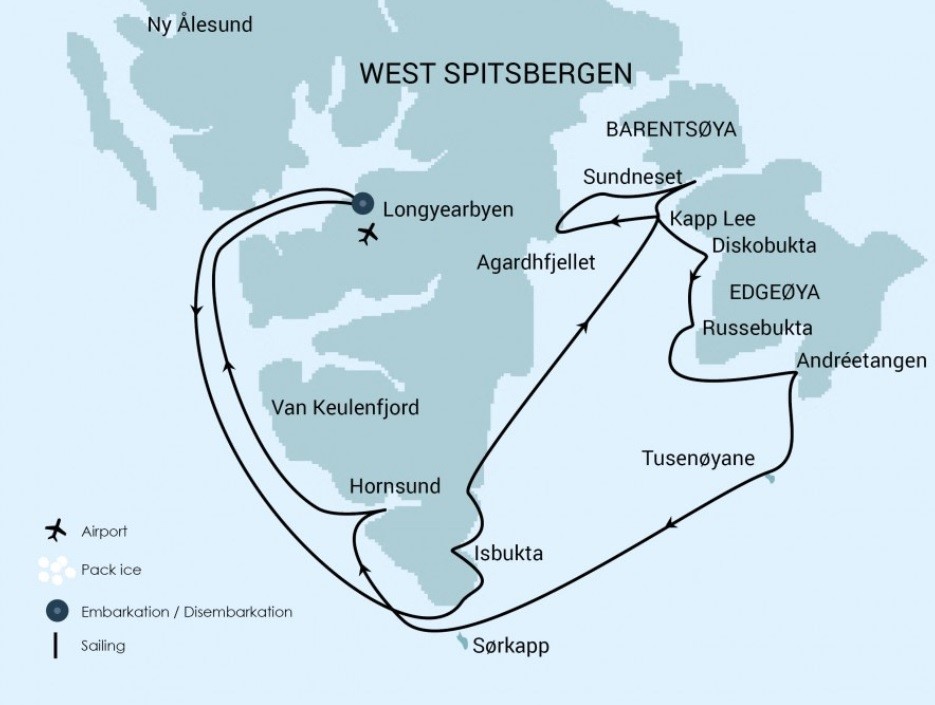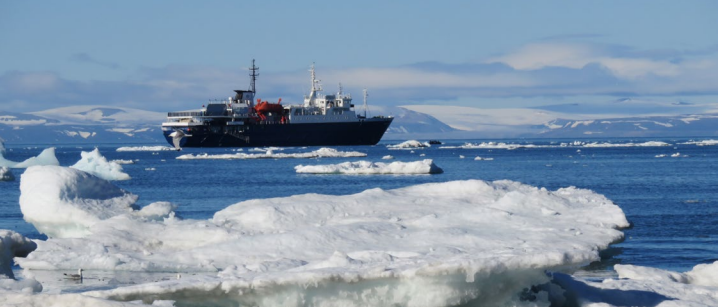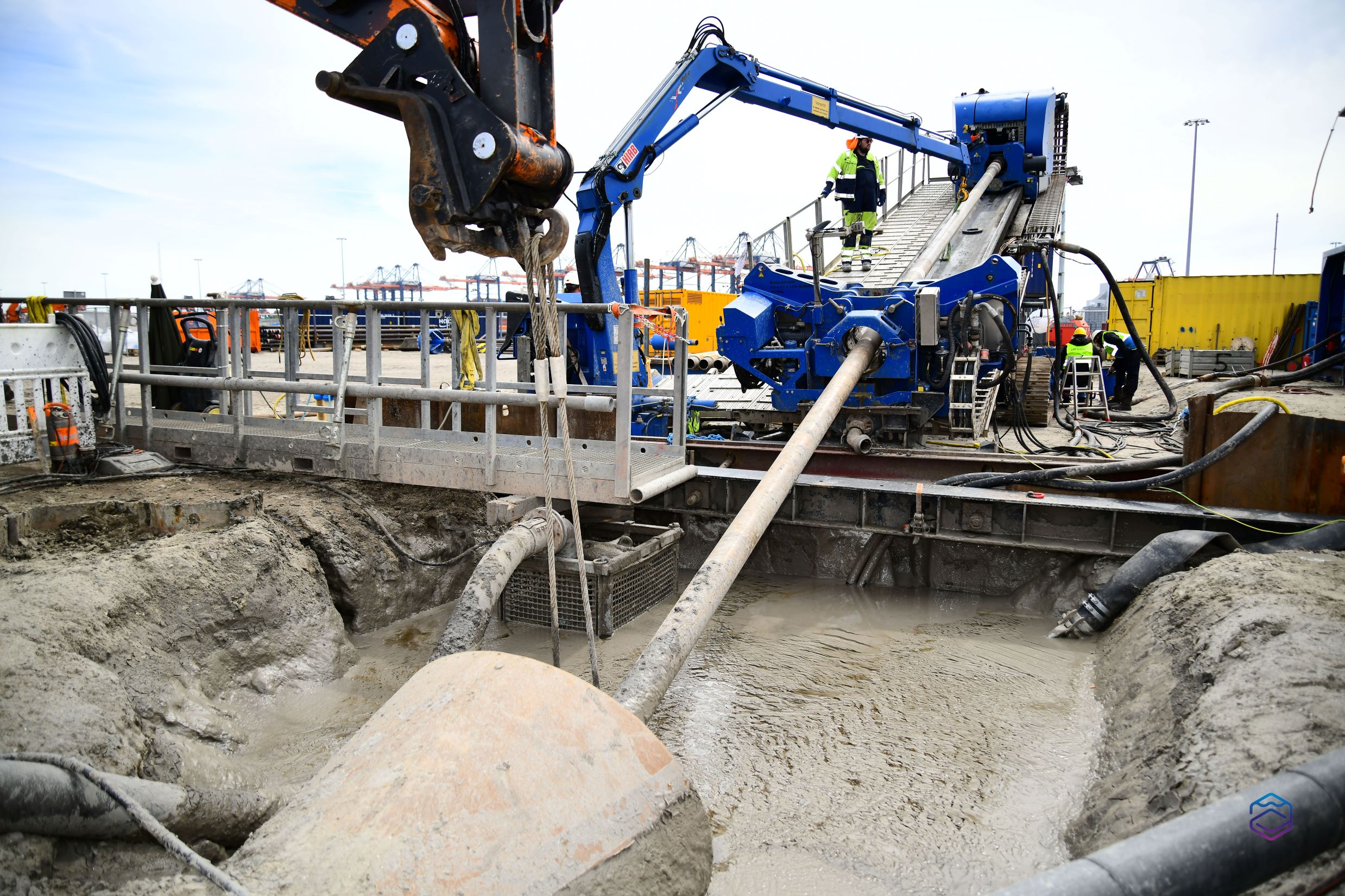While most of us are basking in the sun, seven WUR researchers are opting for the cold of Spitsbergen. Not as tourists, but to work there and see what impact climate change has.
Spitsbergen sounds cold. But it is not too bad. When Expedition Spitsbergen starts in two weeks’ time (13-22 July), the temperature will be about seven degrees Celsius. ‘The average summer temperature on Spitsbergen right now,’ says polar researcher Martine van den Heuvel. She coordinates the Wageningen contribution to what is officially called the SEES expedition. SEES stands for Scientific Expedition Edgeøya Spitsbergen.
Cold or not, the fact is that Spitsbergen is one of the best places in the world to observe climate change. ‘It’s warming up incredibly fast there. Particularly on the northwest side of the archipelago, where the water temperature has risen by several degrees. The warming in the polar region has already reached three to four degrees.’ One way you can see this is the speed at which the sea ice melts in the spring. Because the ice is thinner than it used to be, it melts away faster and the islands are surrounded by water much earlier than they used to be.
Observing the changes caused by the global warming is the goal of Expedition Spitsbergen. This is largely a repeat exercise, actually. A similar expedition took place in 2015, and Van den Heuvel was on that one too. ‘A number of the 50 researchers from that expedition are on board again now. Some of the research will be repeated and expanded, and some of it will be new. But it is precisely the repeated research that is super interesting, because you can compare the results with those of 2015 and of the 1970s and 1980s.’

Cold and warm
The focal point of the trip is the coast off Kapp Lee on the island of Edgeøya on the southeast side of the Spitsbergen archipelago (see map). Van den Heuvel: ‘I am going to do a basic survey there of what lives in the water along the coast, focussing on the dominant species in the water and on the seabed.
We are mostly on board: the ship is not just where we sleep, but also our base
After the expedition, I will do the same in Ny Ålesund in the northwest of Spitsbergen. I want to compare these two places because on the west side of Spitsbergen, the Atlantic Gulf Stream is pushing further and further north. So that area is getting warmer. The south-eastern side mainly gets currents from the Arctic Ocean, keeping the east side colder than the west side. By comparing the two sides, you can see what impact climate change is having there.’
Van den Heuvel’s study is one of many. SEES aims at diversity, to record the many changes and see how they are linked. ‘My colleague Sophie Brasseur focuses on what walruses eat. She is going to study that using DNA techniques to examine their faeces for dietary residues. We can then link that to my analysis of what lives along the coast. Joep de Leeuw is doing the same thing with bird droppings’. In addition to dietary research on various species, the WUR researchers focus on counts of seabirds and animals, mercury pollution in the soil and grass, and the interaction between researchers and tourists.
Tourists
This last aspect of the study is new. Besides the 50 scientists, there are the same number of tourists on board. They are not only there to experience the trip of a lifetime, but also to help out. Social scientist Nathalie Steins will study this cooperation. ‘Of course, they are not your average tourists,’ Van den Heuvel explains. ‘They are interested in research and often their own background is in something nature-related.’
The expedition will take 10 days and will start in Longyearbyen, the capital of Spitsbergen. The ship Ortelius is already there, with 87 crates of research material on board. In theory, the route has been decided. ‘But on Spitsbergen you never know if it will all go to plan,’ says Van den Heuvel, speaking from experience.
On the northwest side of the archipelago, the water temperature has risen by a several degrees
‘The weather, the wind and the sea ice can upend your plans. And the presence of polar bears, of course.’ At most, the polar explorers will see these iconic animals in the distance from the safety of the ship. Security measures are strict. ‘We are on board most of the time: the ship is not just where we sleep, but also our base. You go ashore in zodiacs, small inflatable boats. That too is surrounded by many safety measures. The guides on board have to follow an extensive procedure before mooring the boat to make sure that there are no polar bears around.’
Blog
The seven WUR researchers going to Spitsbergen are Martine van den Heuvel, Hans Verdaat, Nathalie Steins, Susanne Kühn, Joep de Leeuw, Sophie Brasseur and Nico van den Brink. Further information can be found on the SEES website (www.sees.nl/2022). The WUR participants write blogs about their activities, which will be reported on by the Dutch television news channel NOS, among others.

 The Ortelius at Kapp Lee, Svalbard, during the 2015 expedition. Photo: Martine van den Heuvel
The Ortelius at Kapp Lee, Svalbard, during the 2015 expedition. Photo: Martine van den Heuvel 

